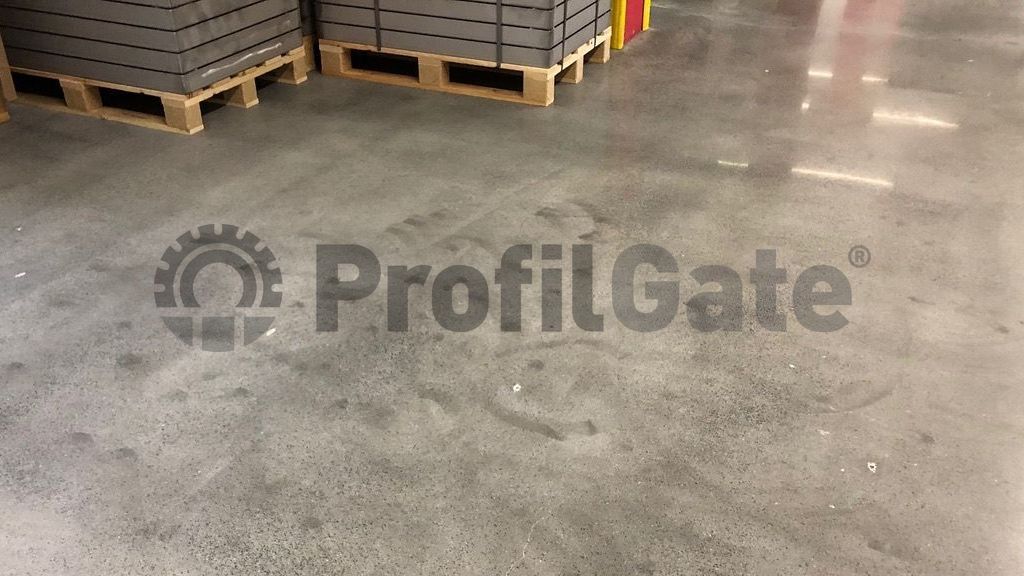
Turn your smart factory into a clean factory too
Ce que vous ne devez pas oublier lorsque vous utilisez des AGV !
Industry 4.0 is "the" buzzword for those responsible for business processes of all kinds. Every company wants to get to the future and the fourth industrial revolution as quickly as possible. The desire for greater automation is leading to the increased use of automated guided vehicles (AGVs) in logistics. These bring many advantages for production. However, they also have disadvantages, such as the dirt they collect on their routes. Despite the latest technology, this problem persists or even increases if no preventative measures are taken.

What is an automated guided vehicle system (AGV)?
The entire system for transporting goods with automatically controlled vehicles consists of several components. These have been defined in VDI Guideline 2510 from the Association of German Engineers. An AGV always consists of
- one or more driverless transport vehicles,
- a control system,
- technology for data transmission between the vehicles and the master computer (and between the vehicles themselves),
- a sensor system for determining location and recording position,
- infrastructure and peripheral equipment
Automated guided vehicles (AG) are, as the name suggests, operated automatically by their own drive system and do not need to be touched in order to find their way. They are means of transport, i.e. they transport loads and only move on the ground (floor-bound). A distinction is made between load-pulling AGVs (e.g. tractors & underride tractors) and load-carrying AGVs. The latter can be further subdivided into AGVs with active or AGVs with passive load handling.
The master controller manages and controls the entire system. It handles administrative tasks such as order scheduling, parking processes, fleet management and route optimisation. Data transmission between the AGV and the master controller (and in some cases between the AGVs themselves) can be realised using different technologies:
- A communication loop in the floor,
- narrowband radio,
- broadband radio,
- infrared.
However, it is increasingly being criticised that all tasks are carried out by a central control system, as functionality and flexibility often suffer as a result. In a joint project between OFFIS (Institut für Informatik e.V.) and IPH (Institut für Integrierte Produktion Hannover), for example, an overall concept for decentralised control of AGVs was developed back in 2013.
There are various types of navigation to ensure that AGVs always find the right route in a production environment. The three main types are (1) guidance, (2) grid or (3) laser navigation. Navigation by GPS is also possible in the open air. Each type of navigation has advantages and disadvantages.

Orientation along the guidelines is achieved either via cameras and the recognition of colour contrasts, Hall sensors that localise magnetic fields or antennas that detect alternating electrical fields. The creation of the guidelines is complex and depends on the ground conditions. Unfortunately, the rapid wear and tear caused by driving over and soiling also poses a challenge with optical guidance. With inductive guidance, the AGV follows a guide wire in the ground, which can also be used to transmit energy. The biggest disadvantage is considered to be the lack of flexibility, as only the existing route exists and there is no possibility to react promptly to changes in the warehouse environment. With grid navigation, transponders, magnets or optical grids (colour contrasts) are embedded in the floor. They also form guidelines, but not continuously, but from point to point. This makes it easier to adapt the routes, as it is not necessary to create a completely new guideline, only the specifications within the grid. Although laser navigation is expensive to purchase, it offers the greatest flexibility in the event of changes in the warehouse environment. Here, reflector markers are placed at the edge of the route, which the laser scanner uses for orientation. With this type of navigation, however, care must be taken to ensure that the reflectors are not covered or damaged.
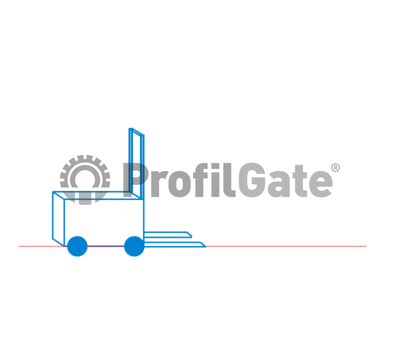 |  | 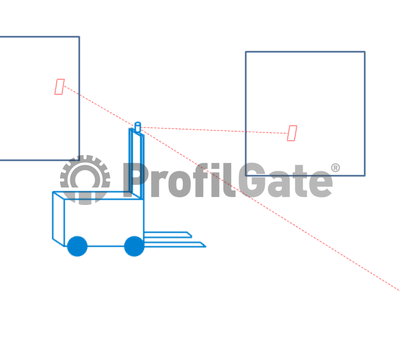 |
Driverless transport vehicle with optical guidance, grid navigation and laser navigation.
An automated guided vehicle system (AGV) also includes consideration of the system's interfaces to the infrastructure and peripheral equipment such as doors and gates, fire doors and lifts. These requirements are also set out in a guideline issued by the Association of German Engineers (VDI 2510 Sheet 3).
What does an AGV do?
AGVs control the transport of different goods in a warehouse or production environment. Depending on the requirements, they can move loads weighing just a few kilograms (e.g. vehicles for small load carriers) or loads weighing up to 50 tonnes (e.g. underride tractors, heavy-duty AGVs). Their speed varies depending on the area of application. If there is passenger transport, the specified speed is usually 1 m/s. In fully automated areas, the speed can be higher, as the risk of accidents is lower there.
Of course, the automation of transport routes has a number of advantages. Depending on the type, automated guided vehicles are suitable for transporting different goods. They optimise and accelerate in-house transport. As a result, production can be increased while labour costs are reduced at the same time. AGVs reduce the error rate and can be used continuously, even around the clock. They can be easily integrated into existing structures and, depending on the control system, can also be adapted more or less easily to changing conditions.
What problem is often forgotten?
One problem that does not change with driverless industrial trucks is the entry of dirt into the warehouse or production environment through the tyres, rollers and wheels of the vehicles. By always travelling in the same lane, dirt is carried away, e.g. from logistics to the clean zones. This in turn leads to increased cleaning costs, possible contamination of products, surface soiling and, particularly in the case of AGVs, to faster wear of guidelines or grids in the floor. In addition, roller wear is particularly evident in AGV lanes, especially in bends and also in the manoeuvring area. The fact that the tracks are always the same increases abrasion and the turning / manoeuvring of the vehicles in the same places always leads to punctual damage to the hall floor.
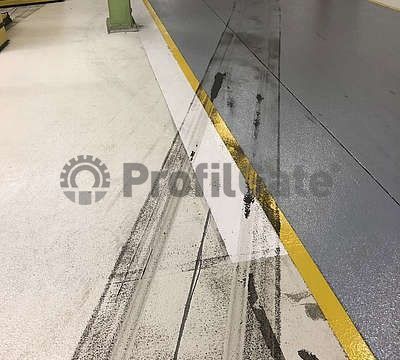 |  | 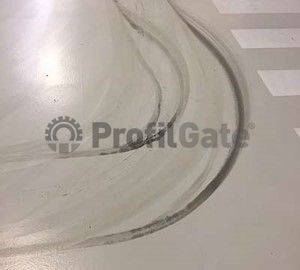 |
The solution is the ProfilGate® cleaning system, which can be integrated into the warehouse or production environment. These are segments consisting of trays with gratings. Brush strips are clamped into the gratings, which work actively and purely mechanically thanks to their pre-tensioning and the angled arrangement of the bristles. In this way, they remove dirt from tyres and soles. This falls through the grids into the trays and is collected there. The patented brush strips have many design details, such as the angled bristles, the pre-tensioning, the roof and profile shape and specific material, which guarantee the highly efficient functionality of the overall system, and ProfilGate® is available in various designs for different tyre, wheel or roller sizes.
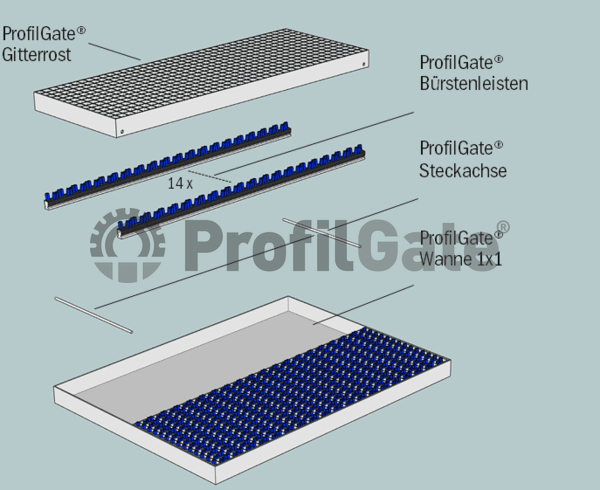
The st series is used for driverless transport systems. It has fine-meshed grids for narrower castors, as well as high stability with high weights and is therefore the product for AGVs, but the castors of tugger trains, trolleys and handcarts are also reliably cleaned here. The st series is ideal for indoor use and narrow, hard castors thanks to its smooth, quiet-running grating surfaces.
If you need to fulfil the requirements of a hygiene concept, a sti series is also available. The difference here is that the gratings are also made entirely of stainless steel. This version is often chosen in the food processing industry, as strict standards such as IFS Food or the BRC Global Standard for Food Safety apply in this sector.

The ProfilGate® k series is also available for AGVs. It offers fine-meshed and absolutely smooth plastic gratings that ensure a smoother passage. The plastic of the gratings makes them particularly lightweight, and they are also antibacterial and therefore even approved for use in the food industry.
The guidelines for AGVs can either be placed between the trays or attached to the gratings with an AGV guide rail. This rail can also be retrofitted to existing bays. So if you are already operating one of our cleaning bays or are not currently using AGVs, you can be sure that this option is always available to you. The cleaning field can also be customised for grid guidance. The division allows a grid point to be placed between the fields so that the automated guided vehicle continues to receive the guiding impulse.
The advantages of ProfilGate® for AGVs at a glance:
- Less dirt in the production or storage environment,
- lower cleaning costs,
- guidelines are protected,
- lane surface is protected,
- less roller abrasion,
- less wear and tear.
You can find more information here.
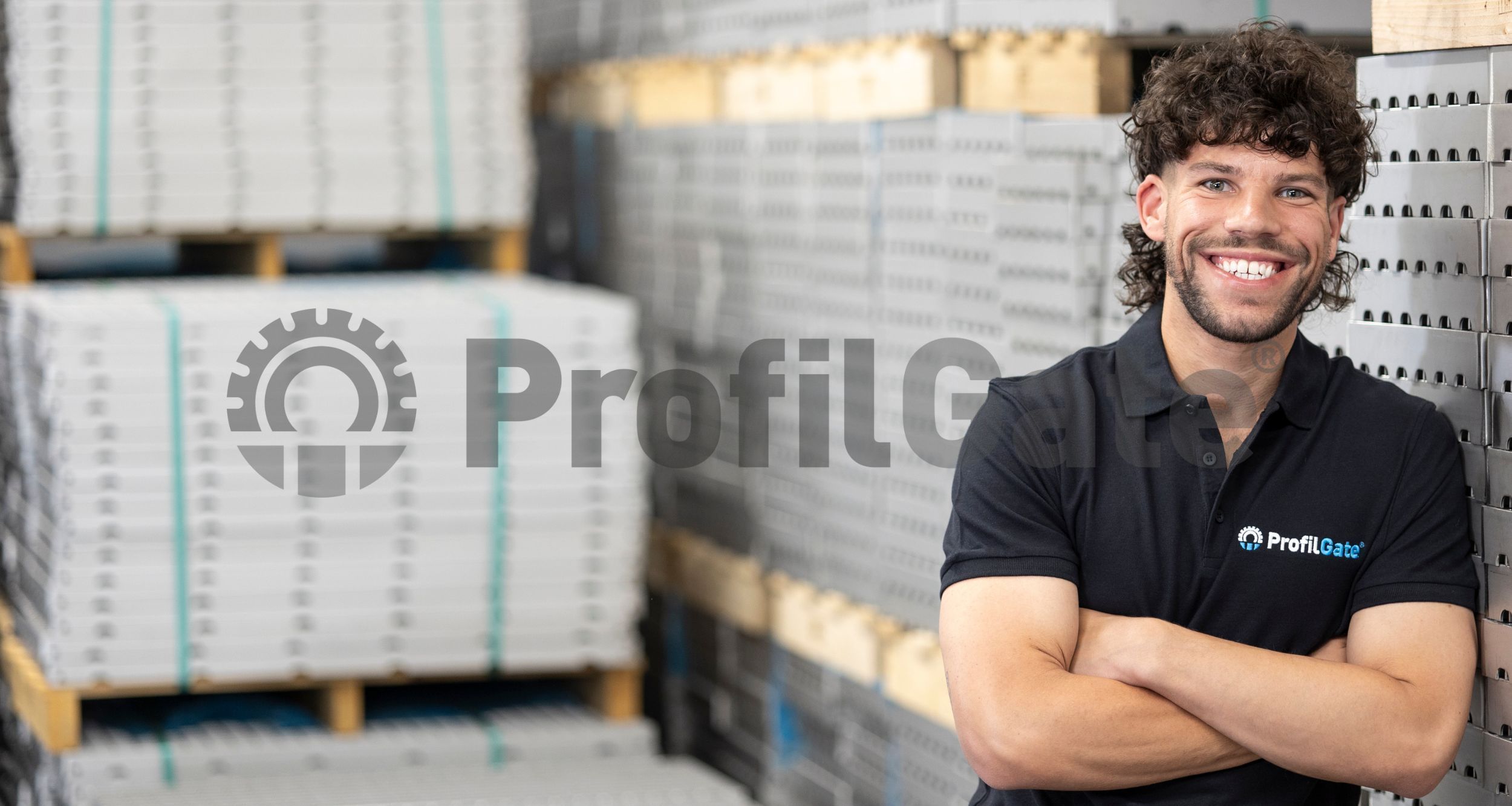
YOUR PERSONAL CONTACT
HEUTE Maschinenfabrik GmbH & Co. KG
Höhscheider Weg 37
42699 Solingen
Monday till Friday
09:00 bis 17:00 Uhr
